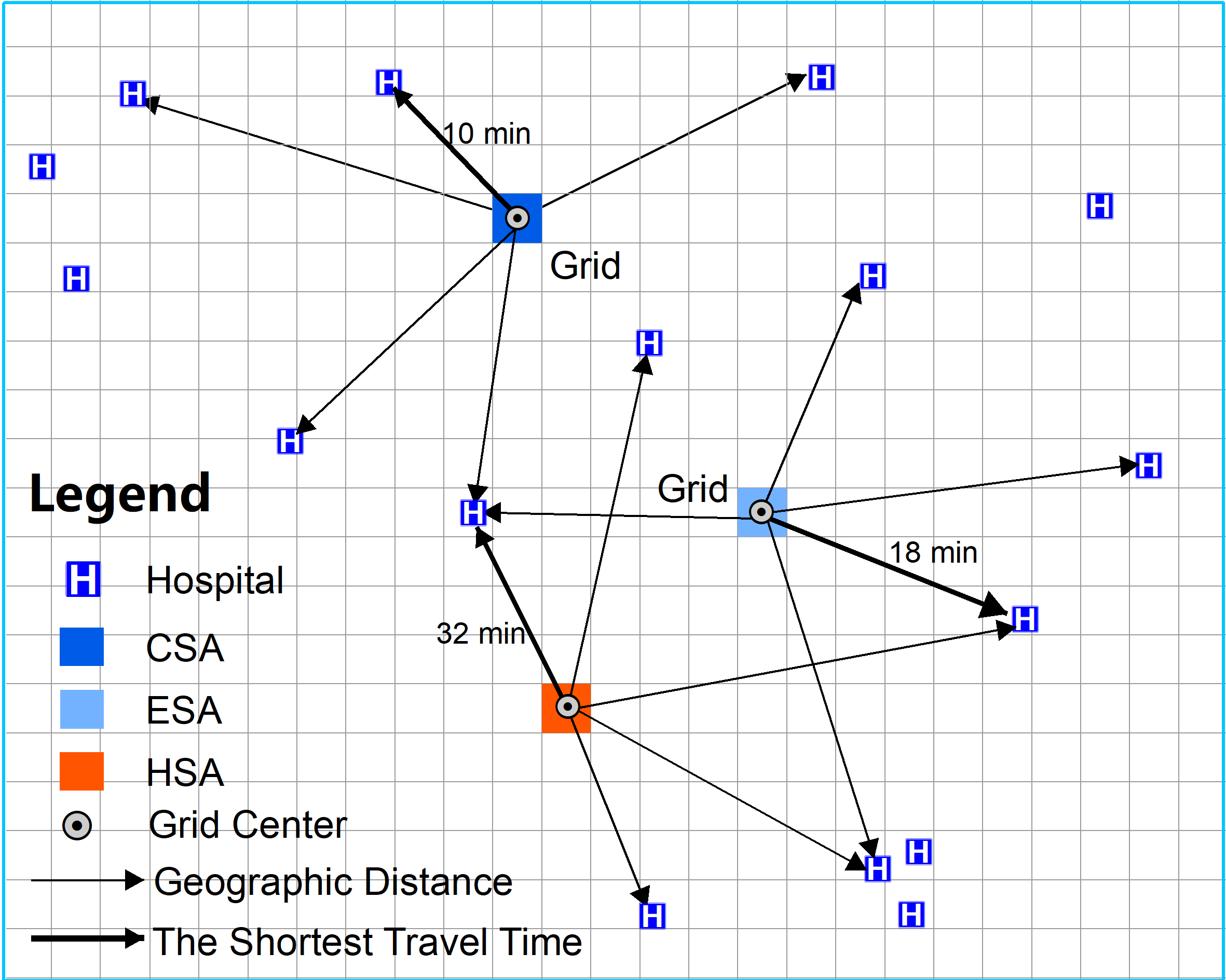The unbalanced distribution of healthcare resources across space and healthcare levels is an important reason for disordered medical treatment. The Hierarchical Diagnosis and Treatment (HTD) reform, which was implemented in China in 2015, emphasized that residents’ different medical service demands correspond to the different levels of medical institutions, and aimed to improve the efficiency and equity of multilevel healthcare. However, previous studies have not paid sufficient attention to multilevel healthcare accessibility based on both the divergence of hierarchical healthcare supplies and variations in residents’ behavioral preferences for different types of healthcare. Recently, the research team of Deng Wei from the Institute of Mountain Hazards and Environment (CAS) has made important progress in the study of spatial equity in multilevel healthcare accessibility in Chengdu, a metropolis in China.
The research team proposed the “2R grid-to-level” (2R-GTL) approach for performing systematic and dynamic assessments of the equity in the spatial accessibility to a multilevel healthcare system in a metropolis. This Study found that City-level hospitals have the highest accessibility, while community-level health centers have the lowest accessibility. The lack of primary healthcare is the most serious problem in these healthcare shortage zones. MHSAs (multilevel healthcare shortage areas) are mainly clustered in the sparsely settled mountainous areas on the west and east sides of the metropolis, Meanwhile, some closely settled areas that lack multilevel healthcare are scattered in the suburban administrative boundary areas.
This study was supported by the National Natural Science Foundation of China (Grant NO. 41601141, 41471469), the Presidential Foundation of the Chinese Academy of Sciences, China (2017);the Foundation of China Scholarship Council (Grant NO. 201708515064); the Research Foundation of Chengdu University of Information Technology (No. J201617).
This study entitled Spatial Equity of Multilevel Healthcare in the Metropolis of Chengdu, China: A New Assessment Approach has been publishe online in Environmental Research and Public Health.

Figure 1. Calculation of grid-to-level healthcare spatial accessibility (Image by ZHANG Shaoyao).
Contact:
Prof. DENG Wei
Institute of Mountain Hazards and Environment, Chinese Academy of Sciences
Chengdu, Sichuan, 610041, China
Tel: 86-28-85353897
E-mail: dengwei@imde.ac.cn
